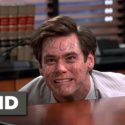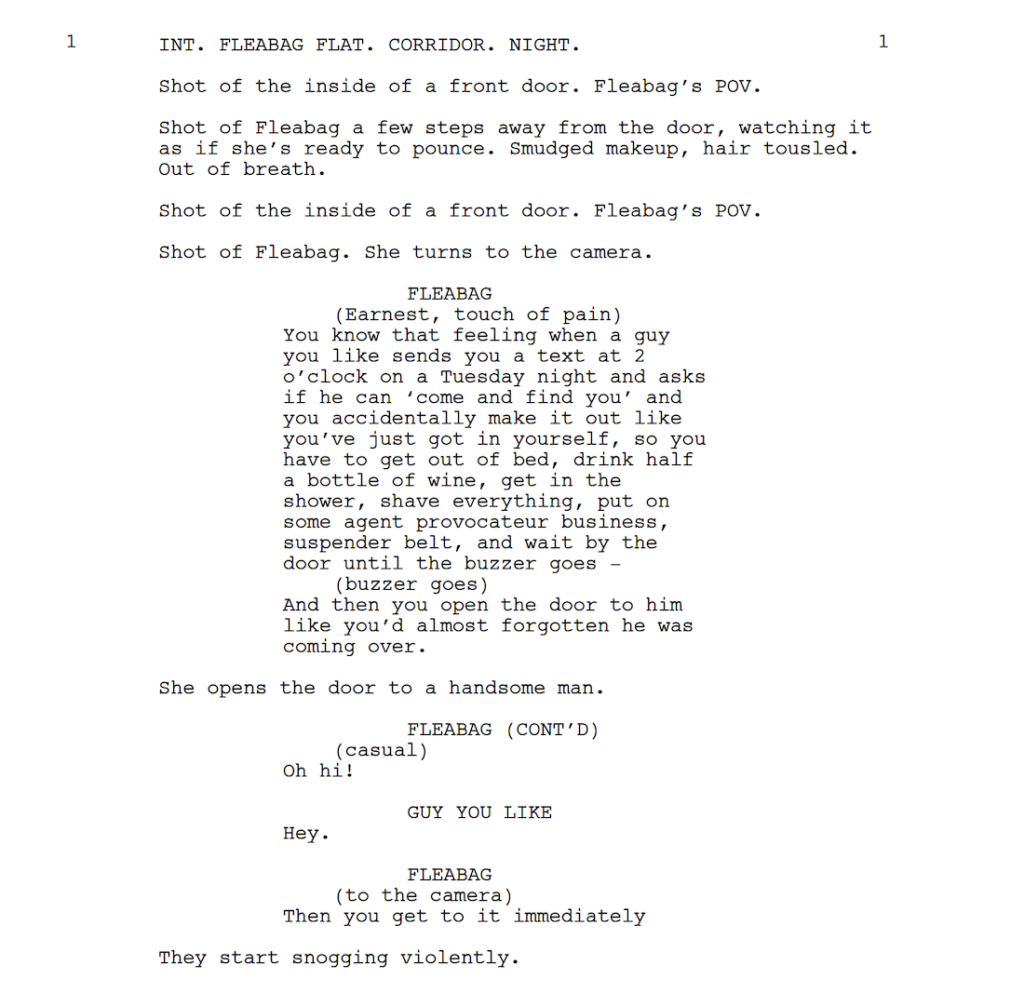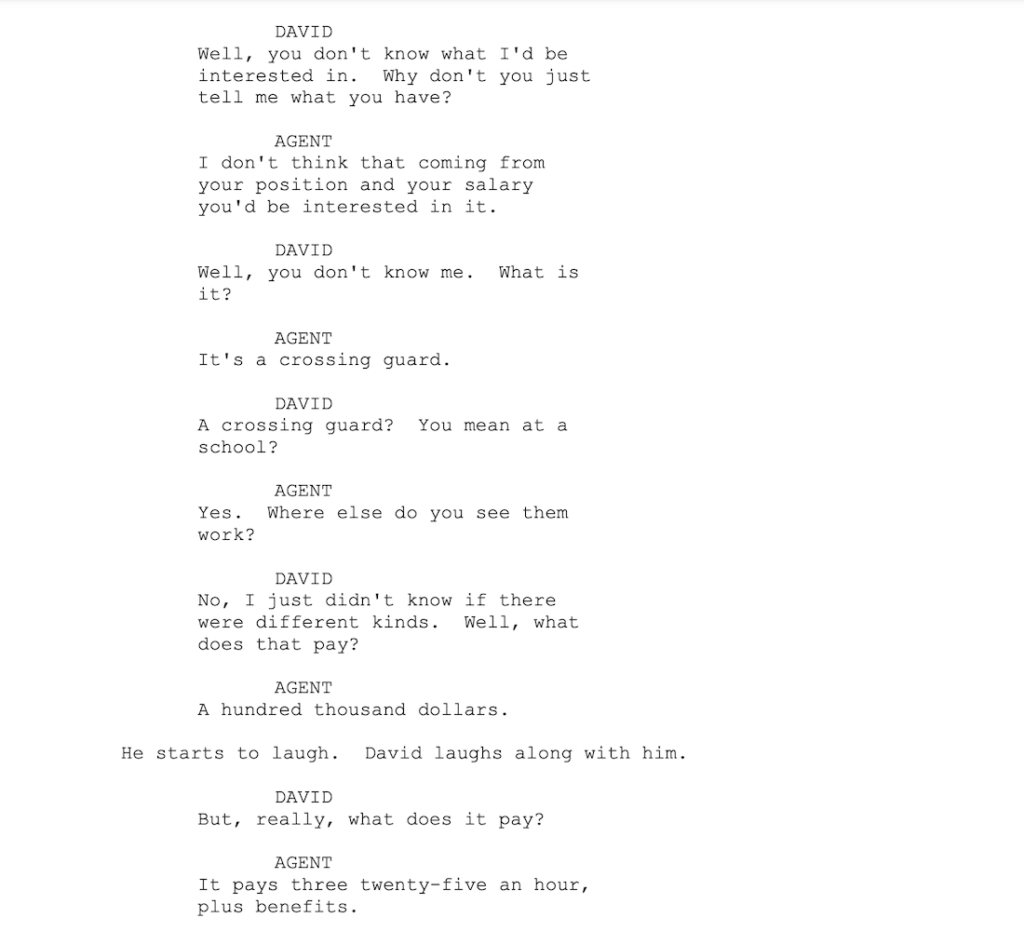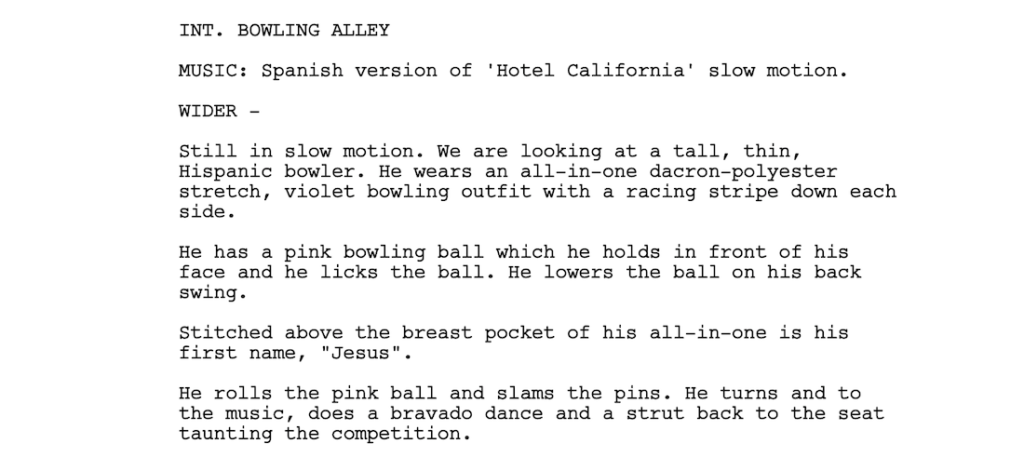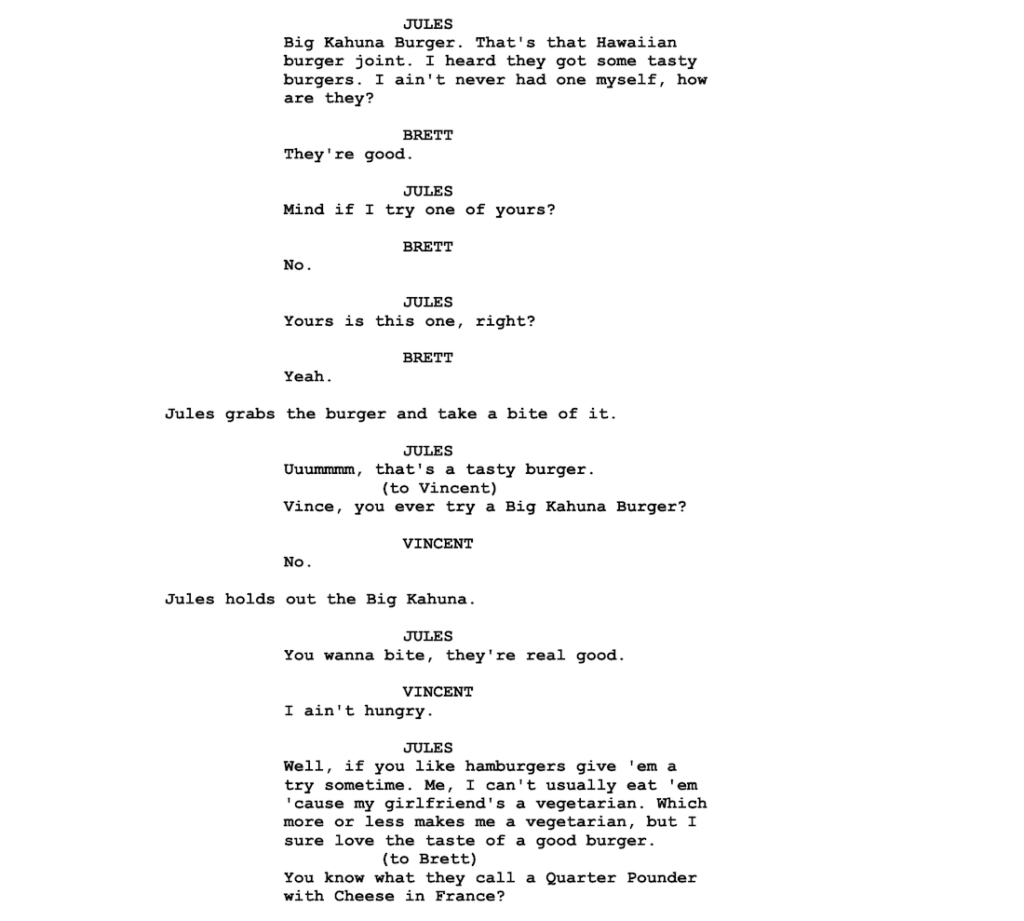Read some of the funniest movie moments before they ever made it to the screen.
Oftentimes it’s difficult. Sometimes it’s not. Most of the time it relies on dialogue, pacing, physicality, and, let’s face it, actors. And always, it should be fun. Writing comedy is one of the greatest joys and greatest challenges in screenwriting. The bad news is that it doesn’t always work. The good news is there are so many times when it does. And so many ways to write it.
But what does good comedy even look like in a script? Let’s see what some of the funniest movie and TV moments look like on the page.
[Click the movie and show titles or the script excerpts to read the whole script!]
“The Pen is Blue!” | Liar Liar
So much of physical comedy comes not from what’s on the page but from the interpretation of the page by a great comedian. And few would argue that Jim Carrey is the master. Take, for example, this scene from Liar Liar (page 42), wherein Carrey takes a page of screenwriters Tom Shadyac and Mike Binder’s minimal comedic direction and turns it into two-and-a-half minutes of comedic brilliance.
“Michael’s Birthday” | The Office
This is Spinal Tap, written by Christopher Guest, Rob Reiner, Harry Shearer, and Michael McKean, is one of the earliest “mockumentaries” (mock documentary), and with its commercial success and cult following, it’s certainly the one that put the genre on the map.
Soon after came the mockumentary TV show, which grew to become a fairly standard TV format, and claims ownership of some of the greatest comedies in modern television history. Since the shows act like documentaries that mimic real life, their talking heads, awkward moments, and slipshod dialogue shine a light on the weirdnesses of daily life, making the show… well… funny. No doubt, the granddaddy of the TV mocumentary genre has to be The Office.
The following scene is page one of “Michael’s Birthday,” wherein Gene Stupnitsky and Lee Eisenberg wrote some delightful, snappy dialogue, with sparse, yet direct prose that allows us to see the scene unfold. Note how Steve Carell is able to take the energy from the page into his performance.
“Episode #1.1” | Fleabag
When a character speaks directly to the audience, he or she is “breaking the fourth wall.” This device goes way back to the silent era and is currently crazy-popular. Everyone seems to be doing it – some argue, perhaps too many people are doing it. And the writer/actress who gets the credit for this, the woman who does it oh-so-well, would be Phoebe Waller-Bridge in Fleabag.
Waller-Bridge consistently breaks the fourth wall – to relay exposition, express how she’s feeling, color a moment, or just give us a visual cue nodding to how completely absurd a given situation might be. The following is the first scene from the pilot episode. With very little direction, the sequence is so clearly and expertly written, that it is equally funny on the page as it is on screen.
“I’m So Bored” | Don’t Look Up
Mr. McKay gets his own category because… well… he’s Adam McKay… and arguably one of the most relevant writers today… and Will Ferrell’s partner… and he wrote Step Brothers! His comedies are as diverse as they are awesome, but the one thing they all have in common is masterful writing, with solid dialogue and limited direction.
On page 24 of his latest film, Don’t Look Up, there is a funny scene wherein Randall (Leonardo DiCaprio), Kate (Jennifer Lawrence), and Dr. Oglethorpe (Rob Morgan) meet with President Orlean and her sidekick Chief of Staff, Jason (Meryl Streep and Jonah Hill). One can’t help but notice how little direction is on the page. The scene is purely dialogue-driven. Check out how McKay masterfully captures the characters’ independent voices and points of view in their words, as opposed to description, allowing the actors the freedom to translate those words into comedy magic.
“Dinner Scene” | The Nutty Professor
In Eddie Murphy’s early comedies, he’s a flat-out great comedic actor (Trading Places, 48 Hours, etc.). It’s not until later that he becomes the king of shapeshifting. And one of the most well-known examples has to be the dinner table scene in “The Nutty Professor.” Screenwriter David Sheffield wrote a pretty straightforward comedy scene (page 14), with light direction and solid dialogue. What makes it over-the-top funny is the creative decision to have Eddie Murphy play all the parts – which he does brilliantly.
“Crisis Pregnancy Center” | Borat Subsequent Moviefilm
With improvisational comedy, the actors do all the work for you. Just give them a scenario – preferably one that pushes plot and/or character development – then let them go. One prime example is the infamous Borat (which is also considered a mockumentary). Sasha Baron Coen is an absolute genius at improvisation. His scripts are really just outlines of narratives wherein actors/characters are put in uncomfortable situations with real people being punked. He has a set of jokes written but then plays it off the cuff.
I felt really off balance during this “Crisis Pregnancy Center” scene from Borat Subsequent Moviefilm, in which Borat takes his daughter Tutar to a pregnancy clinic after she accidentally swallows a plastic baby decoration that sat on top of a baby shower cupcake. See if it makes you squirm as well. [Editor’s Note: The script seems to have been written after the film was shot… do with that information what you will.]
“Employment Agency Scene” | Lost in America
It goes without saying (but I’ll say it anyway) that comedy relies almost 100% on your actor, and whether or not your actor is funny. You can write the most knee-slapping, pants-peeing, hysterical scene, but if your actor can’t pull it off, then it’s just one in a million scenes that suck.
Albert Brooks has mastered comedic delivery. Dry, stoic, earnest, he’s the lovable loser who doesn’t realize he’s a loser. In the following scene from the ageless Lost in America, ex-big-city executive David interviews at a small-town employment agency with dreams of a new life. Screenwriters Albert Brooks and Monica Johnson have created a comedic moment by setting his character’s expectations too high and then allowing them to slowly deflate.
Looking at the script (page 105), one can see that the super-simple premise is also super-simple on the page. Brookes brings the masterfully mundane dialogue to life, making the scene a classic. Note, there is little to no direction. The dialogue and absurdity of the situation are so strong, that the scene speaks for itself.
Are we seeing a pattern yet?
“Jesus Scene” | The Big Lebowski
Surreal comedies feature absurd, nonsensical events, treated as if they were the everyday norm. Because of the lunacy of any given situation, writing surrealism often requires descriptive prose. Some of our greatest directors and writers have used surrealism to elicit nervous giggles from an audience. (Martin Scorsese, Terry Gilliam, Wes Anderson, Charlie Kaufman…). In general, surreal humor is found in the randomness of events, and the hero’s bum luck (After Hours, Brazil, Eternal Sunshine of the Spotless Mind). But some surreal humor isn’t as absurd as these examples, using less obvious surrealism to make a scene pop.
The Coen Brothers are superstars of going from the mundane to the surreal. The Big Lebowski’s “Jesus” scene, on page 31, is a modern classic, wherein a purple-clad, ridiculous bowler named “Jesus” (John Turturo) shows off his eccentric bowling style, then interrupted by the run-of-the-mill dialogue of The Dude (Jeff Bridges) and Walter (John Goodman).
“Apartment Scene” | Pulp Fiction
Without a doubt, one of the most important elements of comedy writing is dialogue. And dialogue-driven scenes are a good way to draw top actors, hungry for the opportunity to shine by interpreting sharp, nuanced, and authentic dialogue.
Tarantino is a dialogue virtuoso. There is a certain randomness to his prose, allowing the snappy dialogue to speak for itself. Take the following scene from Pulp Fiction (page 16): The wicked “Apartment Scene” is an excellent example of Tarantino’s masterful dialogue, written with almost zero direction on the page.
—
So, what is the constant in almost all the best examples of comedy writing (save for surrealism)? What have we learned here?
DON’T OVERDIRECT!
KEEP IT SIMPLE, STUPID.
If you want the laugh, go for white on the page; have your jokes, your set-pieces, your pratfalls, and your spit-takes be funny, but don’t over-describe them. Allow the set designers to design, the costumers to costume, the directors to direct and the actors to act. After all, this is their job. Your job is to write.
So, get busy, get funny, and go make them laugh.
The post What the Funniest Movie (& TV) Moments Look Like on the Page appeared first on ScreenCraft.
Go to Source
Author: Kathleen Laccinole
